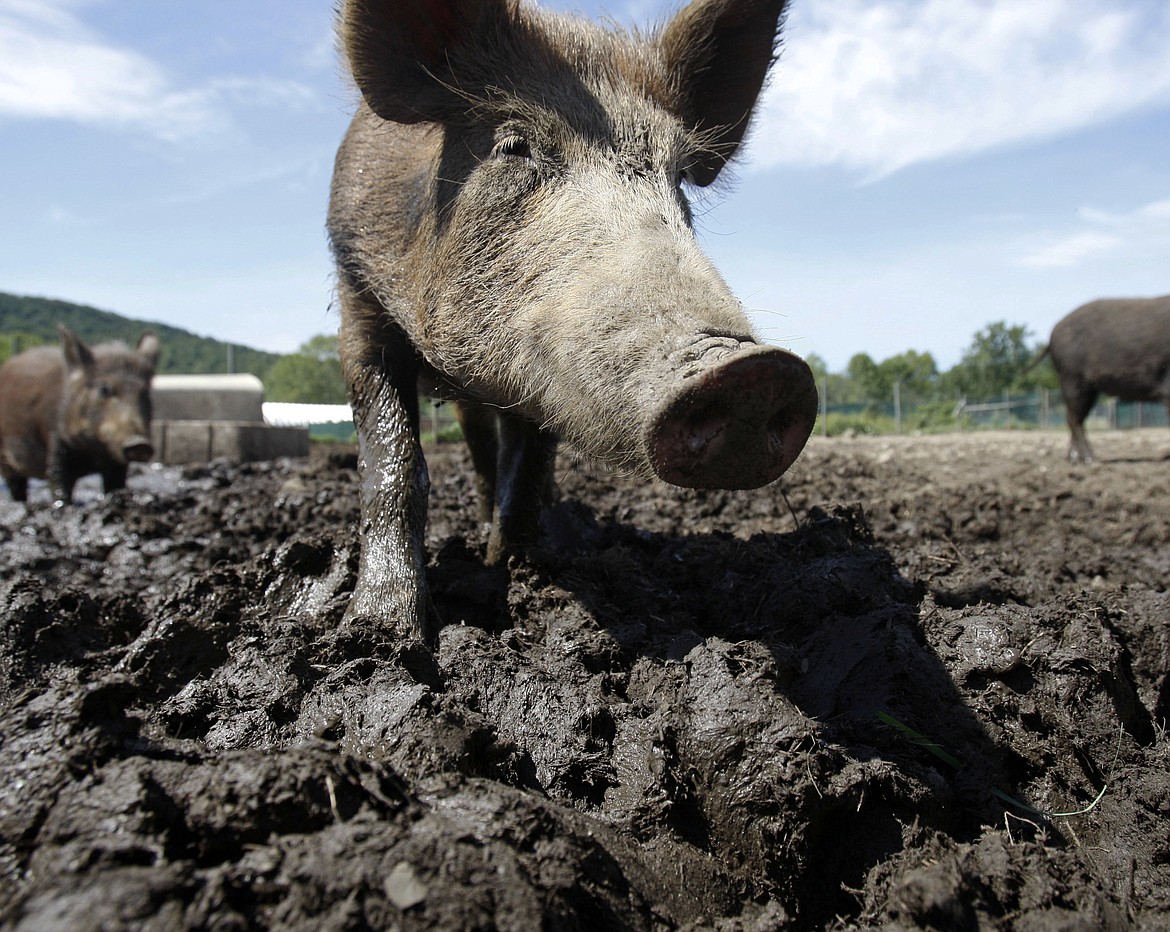Wild pig reports on the rise in Montana
Feral swine appear to be rooting up in Montana — and invasive species officials say they will be ramping up Big Sky’s “Squeal on Pigs!” campaign in the Flathead Valley and surrounding area.
It’s part of a continued state, federal and international campaign against the pig invasion that strains the U.S. by more than $1.5 billion in annual damages and control costs.
Assistant State Veterinarian Tahnee Szymanski said reports of feral swine in Montana previously remained as few as one or two hogs.
Szymanski said reports over the past 12 months have grown to nearly a dozen, mostly throughout northern Montana but somewhat sporadically across the state.
In its northwestern reaches, feral swine were reported during the past year in Lincoln, Pondera, and Lewis and Clark counties, according to the Montana Department of Livestock.
Seemingly few, the aggressive pigs remain prolific breeders, according to Montana State University’s Animal and Range Sciences Extension Service.
Offspring from domestic pigs, meanwhile, have shown to quickly revert to wild animals within as few as a two generations, growing tusks and long, bristly hair — otherwise becoming fully boarish.
The spread of disease or parasites remains a major concern with the animals. Montana officials ask that any pig that appears wild be reported as such.
Feral pigs are generally black, but colors could range from gray and brown to blonde and red, including spotted variations, according to the extension service.
Szymanski said that while some swine are immigrating to Montana and neighboring states from Canada, perhaps a greater concern is that others are being let loose to develop hunting resources or simply escape from domestic stocks, and then soon become feral and spread.
Montana landowners or lessees are allowed to kill the animals on private property if a pig poses an immediate threat to people or property, though state officials prefer that seemingly wild pigs are instead reported — some might just be pets.
If a pig is killed, landowners or lessees need to report it within 24 hours to the state Department of Livestock.
State eradication efforts are restricted to the department, or to state and federal employees it designates for eradication.
FEDERAL OFFICIALS say more than 6 million feral hogs thrive across North America, causing major environmental and economic impacts.
Data since 1982 show a steady flood inland mostly from Southern coastal states, Texas and California, according to the U.S. Department of Agriculture.
Now reported in at least 35 states, the national population continues to explode, according to the USDA’s Animal and Plant Health Inspection Service.
Feral swine were introduced to the Americas as a food resource during the 1500s by explorers and settlers, and in the 1900s, Eurasian wild boars were transplanted to parts of the U.S. for sport, according to APHIS.
The nonnative invaders are now a mix of domestic pigs, Eurasian boars, or hybrids of the latter, according to the federal agency.
A recent USDA study indicated that wild boars annually cause more than $1.5 billion in damages and remediation costs from thoroughly rooting, wallowing and trampling resources.
The pigs roam in herds technically known as sounders.
In January 2020, invasive species councils in Montana and Washington coordinated with federal, state and Canadian officials to muster a transboundary response effort.
Soon thereafter, the first Feral Swine Transboundary Workgroup meeting convened.
The group ultimately defined five strategic goals in combating the invasive species, from coordination and monitoring efforts to reporting and removal.
The latter calls for rapid response efforts to confirmed sightings in hopes of eliminating an entire sounder of feral pigs, if necessary, within 48 hours to prevent its likely spread.
Resources, however, so far remain lacking for Montana officials to accomplish such a goal.
To catch feral swine in Montana, for instance, state officials now have to first borrow a specialized trap from Idaho, Szymanski recently told the Montana Invasive Species Council.
That prompted the council to begin estimating costs to get Montana’s own trap, which could cost some $10,000 including a live-stream camera and estimated personnel training.
Officials also rely on special cooperative agreements with pilots in borrowing helicopters to survey for and potentially shoot feral swine from the sky.
Feral pigs in the state can be reported at 406-444-2976. More information on Montana’s efforts is available at squealonpigsmt.com.

